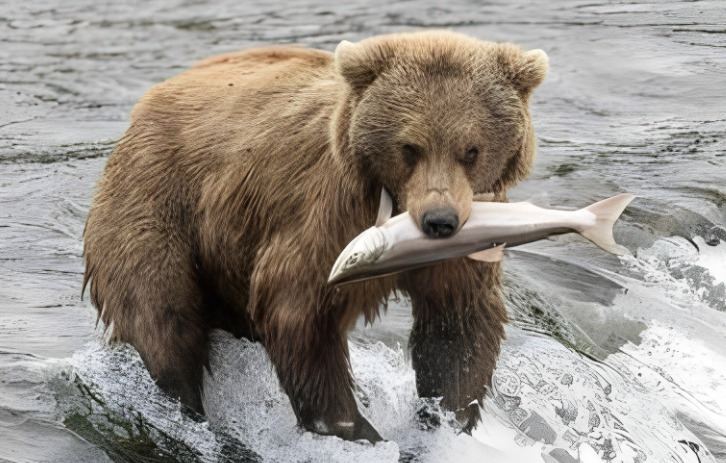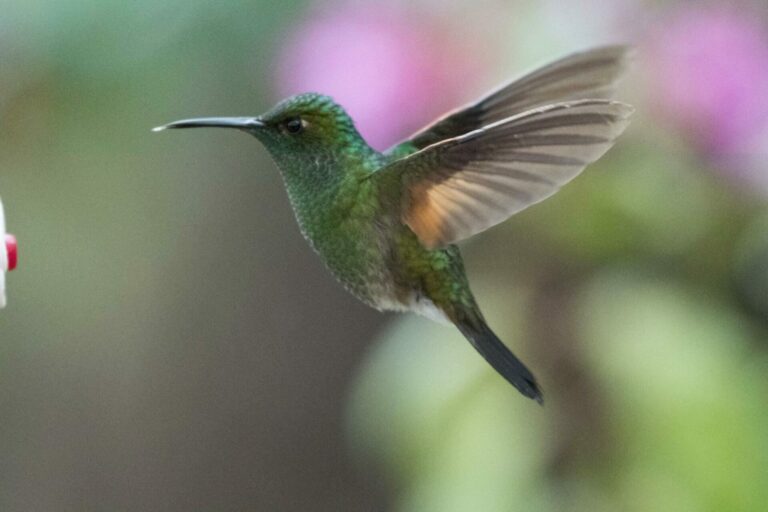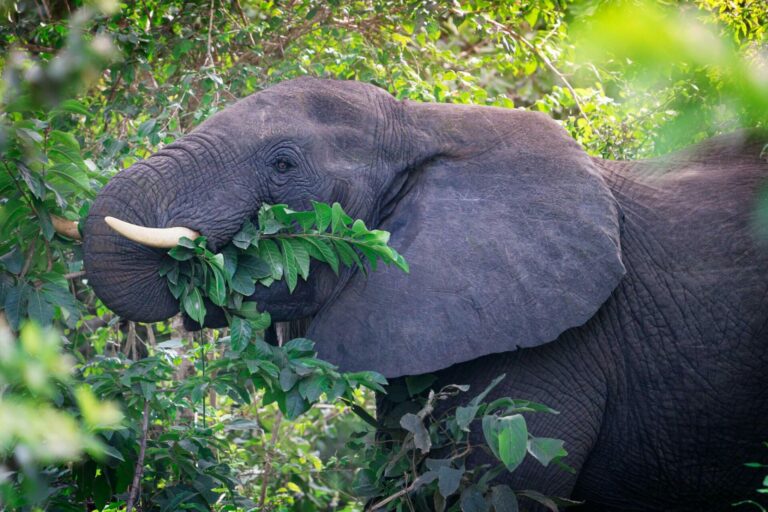What Do Bears Eat? Discover Bears’ Favorite Foods in the Wild!
Curious about a bear’s favorite food? From berries to fish, explore the top foods that keep these mighty animals happy and healthy. Click to learn more about what makes bears’ mouths water!
Introduction
Bears are fascinating creatures with diverse diets that vary significantly depending on their species, habitat, and the season. As omnivores, bears have a broad palate, enjoying a mix of plants, insects, and occasionally, larger prey. Understanding what bears eat is crucial not only for wildlife enthusiasts but also for anyone venturing into bear habitats. So, what exactly makes up a bear’s diet? Let’s dive in and explore the varied menu of these powerful creatures.
The Omnivorous Nature of Bears
Bears are omnivores, meaning they consume both plant and animal matter. This dietary flexibility allows them to adapt to different environments, making them one of the most resilient species in the wild. But being an omnivore doesn’t mean that bears eat everything equally. The balance between plant and animal matter in their diet can vary greatly depending on the species.
For instance, while the giant panda primarily feasts on bamboo, the polar bear’s diet is heavily carnivorous, focusing on seals and other marine life. This omnivorous nature allows bears to survive in a variety of habitats, from the icy tundras of the Arctic to the dense forests of North America.
Bears’ Favorite Food
Bears are omnivores with a varied diet that includes a mix of plant and animal matter. Their favorite foods often include fruits, nuts, and honey, which provide them with essential nutrients and energy. Depending on the species and season, they also eat insects, small mammals, and fish. For example, grizzly bears are known for their love of salmon, while polar bears primarily hunt seals. Bears’ excellent sense of smell helps them locate food from great distances, making them adept foragers. Their diverse diet reflects their adaptability and crucial role in their ecosystems.

What Bears Eat in the Wild
Bears are well known for their ability to eat a wide variety of foods in the wild. They eat nuts, berries, roots, grasses, insects, fish, and even carrion. This diverse palate enables them to adapt to fluctuations in food availability over time.
Plant-Based Favorites of Bears
Fruits
Fruits are a significant part of a bear’s diet, especially for species like black bears. These sweet treats are not only delicious but also provide essential nutrients that help bears maintain their energy levels. Common fruits consumed by bears include berries, apples, and pears. During the summer and early fall, bears can often be found foraging for ripe fruits in the wild, stocking up on the energy they need to prepare for the colder months.
Nuts and Seeds
Nuts and seeds are another vital component of a bear’s diet. Rich in fats and proteins, they help bears build up the energy reserves needed for hibernation. Bears are particularly fond of acorns, pine nuts, and various seeds that they can find in their habitats. These high-calorie foods are especially crucial in the fall when bears are preparing to hibernate.
Honey
Bears and honey are almost synonymous, thanks to popular culture. But this love for honey is not just a myth; bears are genuinely attracted to the sweet, sticky substance. Honey provides bears with a quick energy boost, and they will go to great lengths to raid beehives, even enduring stings from angry bees to get to the honeycomb.
Insects and Small Animals in a Bear’s Diet
Insects
Insects might not seem like a big deal to us, but for bears, they are an important food source. Insects like ants, bees, and beetles are rich in protein and are often consumed in large quantities by bears. Bears use their strong claws to dig into logs and soil to uncover insects, which they lap up with their long tongues.
Small Mammals and Fish
While bears are mostly plant-eaters, they won’t pass up the opportunity to catch small mammals or fish. For example, grizzly bears are known for their impressive fishing skills during salmon runs. They stand in rivers, swiping at fish as they swim upstream to spawn. This source of protein is particularly important for grizzly bears, helping them build up the fat reserves needed for hibernation.

Seasonal Diet Variations
Spring and Summer Diet
In the spring and summer, bears focus on foods that are readily available and easy to digest. Fresh greens, young shoots, and flowers make up a large part of their diet during these months. As summer progresses, berries and fruits become more abundant, providing bears with the sugars and nutrients they need to thrive.
Autumn and Pre-Hibernation Diet
Autumn is a critical time for bears as they prepare for hibernation. During this period, bears enter a phase known as hyperphagia, where they consume massive amounts of food to build up their fat reserves. High-calorie foods like nuts, acorns, and fatty fish are particularly important during this time, ensuring that bears have enough energy to last through the long winter months.
Winter and Hibernation
During winter, most bear species enter a state of hibernation, where they rely on their stored fat for energy. Hibernation is a survival strategy that allows bears to conserve energy when food is scarce. While hibernating, bears do not eat, drink, or eliminate waste, surviving entirely on the fat reserves they built up during the fall.

Fact: In order to store energy for the winter, bears consume salmon for its nutrient-rich skin and fatty portions.
Unique Dietary Habits of Specific Bear Species
Grizzly Bears
Grizzly bears are perhaps the most iconic of all bear species, known for their fishing skills and powerful build. They have a diverse diet that includes everything from roots and berries to fish and small mammals. Grizzlies are particularly skilled at catching salmon during spawning season, a food source that is vital for their survival.
Polar Bears
Polar bears have a specialized diet, primarily consisting of seals. Living in the Arctic, where plant life is scarce, these bears rely on their ability to hunt seals on the ice. Polar bears are excellent swimmers and can travel long distances in search of food, making them top predators in their environment.
Black Bears
Black bears are the most widely distributed bear species in North America, and they have the most varied diet. Depending on where they live, black bears may eat a wide range of foods, including fruits, nuts, insects, and small animals. Their adaptability makes them highly successful in both wild and urban environments.
Panda Bears
Pandas are unique among bears because their diet is almost entirely vegetarian, with bamboo making up 99% of their food intake. While pandas can eat meat, they rarely do, as their digestive systems are better suited to breaking down plant matter. Their reliance on bamboo means that pandas have very specific habitat requirements, which has contributed to their status as an endangered species.
The Ecological Role of Bears’ Diet
Bears play a crucial role in their ecosystems, particularly through seed dispersal. As they consume fruits and nuts, they help spread seeds across large areas, contributing to the growth of new plants. This process supports the overall health of the ecosystem, making bears an important species for maintaining biodiversity.
Bears’ Sense of Smell and Its Role in Finding Food
Bears possess an extraordinary sense of smell, which is about seven times better than that of a bloodhound. This keen olfactory ability allows them to locate food from miles away, whether it’s a ripe berry patch or a carcass hidden in the woods. Bears rely on their noses to guide them to food sources, and this sense of smell is also why they can be easily attracted to human food and garbage, making it essential for people in bear country to manage their food supplies carefully.
FAQs
What is the primary favourite food of most bear species?
Salmon remains a primary favorite among many bear species due to its rich nutrient content, especially fat, which is essential for their survival.
Do all bear species have a preference for berries?
Many bear species exhibit a fondness for various berries, relishing them as a supplemental food source. However, this is not universal.
Why are bears attracted to certain fruits?
The bear’s attraction to specific fruits is often explained by the nutrient content, which provides the bear with essential nutrients, hydration, and sugars.
How do bears prepare for hibernation with their favorite foods?
In order to build up fat reserves, which are essential for sustaining bears during the dormant period of hibernation, bears consume high-fat foods such as salmon in order to build up fat reserves.
Do bears adapt their diet based on seasonal availability?
In fact, bears are capable of adapting their diet based on seasonal availability, thus ensuring that they are fed in a manner that meets their nutritional requirements.
Are there geographical variations in bears’ favorite foods?
It is important to keep in mind that geographical differences have a significant effect on the availability of certain foods and that this influences the preferences of bear populations in terms of preferred foods.
Conclusion
It is evident from the world of bears’ favorite foods that they exhibit a wide range of preferences which reflect their adaptability, ecological role, and nutritional requirements. A bear’s discerning palate contributes significantly to their survival in diverse habitats, ranging from succulent fruits to protein-rich sources such as salmon and insects.






